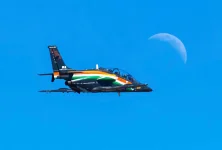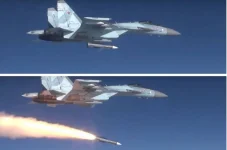- Views: 6K
- Replies: 50
India is reportedly preparing to enter negotiations later this year for a significant purchase of 110 additional Rafale fighter jets directly from the French government.
According to reports from The Print, this potential multi-billion-dollar government-to-government (G2G) agreement aims to rapidly bolster the Indian Air Force (IAF), which currently faces a shortage of fighter squadrons.
This move signifies a shift away from the stalled Multi-Role Fighter Aircraft (MRFA) procurement process. The MRFA tender, initiated in 2018 with a Request for Information (RFI) for 114 jets, has encountered significant delays. Complex requirements regarding the transfer of technology (ToT) and competing interests among aircraft manufacturers have hampered progress.
An IAF official highlighted earlier in 2024 that a direct G2G deal offers a more efficient path, bypassing these tendering complexities. This approach allows India to leverage the existing infrastructure, training protocols, and maintenance facilities established for the 36 Rafales already inducted into the IAF, as well as the 26 Rafale Marine jets recently approved for the Indian Navy. The CCS cleared the naval deal on April 8, 2025, for approximately ₹63,000 crore, equipping India's aircraft carrier, INS Vikrant.
A significant aspect of the proposed deal involves French aerospace major Dassault Aviation potentially taking full ownership of Dassault Reliance Aerospace Limited (DRAL). This facility, located in Nagpur's MIHAN Special Economic Zone, is currently a joint venture established in 2016 with Reliance Aerostructure Limited (a part of Reliance Defence Limited).
DRAL has been manufacturing components like fuselage sections and wings for Rafale jets and parts for the Falcon business jet line, fulfilling Dassault's offset obligations from the initial 2016 Rafale purchase. Dassault has reportedly sought full control over the Nagpur facility since at least 2022 to streamline operations.
Dassault's preference for complete control reportedly stems from experiences during earlier negotiations (MRCA talks, 2013-14) where disagreements arose over quality assurance for jets proposed to be manufactured by Hindustan Aeronautics Limited (HAL). Dassault argued then, and reiterates now according to 2024 reports, that full ownership of the production facility is necessary to guarantee the quality standards required for the advanced fighter jets, potentially positioning the Indian facility for future export orders.
While Dassault has claimed it could produce two Rafales per month at DRAL, delivering 110 jets in five years, some analysts remain skeptical given Dassault's own recent production output in France (13 jets produced in 2023 against a target of 15).
Despite seeking full ownership of DRAL, Dassault Aviation has reportedly committed to sourcing the majority of the aircraft's components from Indian suppliers, aligning with the government's "Make in India" initiative.
The original 2016 deal mandated significant reinvestment (50% offset, roughly €4 billion) into India's defence sector, leading to partnerships with firms like L&T, Mahindra Group, Kalyani Group, and Godrej & Boyce for various components, alongside joint ventures like Snecma HAL Aerospace Ltd for engine parts. The new deal is expected to further develop this indigenous defence manufacturing ecosystem, with DRAL acting as a central assembly and sourcing hub.
However, concerns persist within the Indian Ministry of Defence (MoD), as reported in August 2024. Officials have expressed doubts about achieving the potentially mandated 70-75% indigenous content level, fearing DRAL might primarily function as an assembly unit using kits imported from France, limiting genuine technology transfer.
Ensuring local sourcing for the Rafale, an aircraft comprising over 40,000 components, presents a considerable challenge. Critics also worry that full foreign ownership of the assembly facility could concentrate technology transfer benefits within Dassault and its chosen private partners, potentially limiting the role of state-owned enterprises like HAL.
If finalized, the acquisition of 110 additional Rafales would bring India's total fleet to 172 (including the existing 36 IAF and 26 Navy jets). This would position India as one of the largest operators of the Rafale globally, enhancing its air defence and deterrence capabilities significantly in a region where neighbours like China operate advanced fighters like the J-20 and Pakistan may acquire systems like the J-35.



